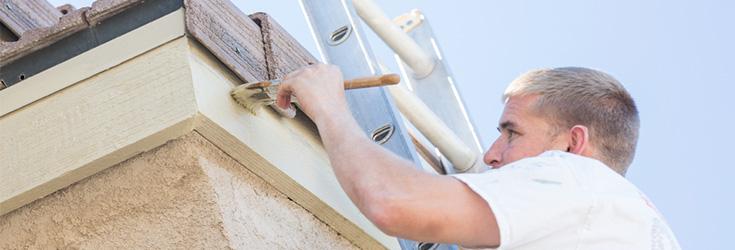Falls from height remain biggest cause of fatal workplace injuries
08/09/2020

This summer, the Health and Safety Executive released its annual statistics for fatal injuries sustained in British workplaces. Their latest report shows a number of key findings, with one of the most notable being a reduction in overall workplace fatalities (111 in 2019/20, down from 147 in 2018/19). In the accompanying report, the HSE does take care to note that this reduction may well be linked to the widespread lockdown measures imposed in March as the government sought to limit the spread of Covid-19.
Another key finding concerns the number of falls from height. In the past year alone, 29 people have died after a fall at height, which marks a reduction from the five year average of 34. Despite this however, these falls from height remain the biggest cause of fatal injuries at work, which shows that the UK still has some way to go in eliminating this danger. The choice and use of ladders and other access equipment has a huge part to play in reducing the danger associated with falls from height, so here are some of the most important things to bear in mind with regards to yours.
It’s vital to invest in a quality latter
We’ve spoken on the blog before about the importance of buying a new ladder, and we understand it might be tempting to buy second hand if you’re trying to limit your outgoing expenses in the wake of this year’s financial turmoil. But when it comes to ladders – as with any other form of safety equipment – it’s important to make decisions based on functionality and quality, rather than economics and price.
Buying second hand ladders can carry a substantial risk, depending on where they’re sourced from. Their structural integrity might not be of an acceptable standard that you need to guarantee the safety of your staff, and wear and tear can accumulate in the form of mould or rot in older ladders, or loose screws and other components in aluminium or fibreglass ladders. What’s more, brand new ladders have an advantage in that not only will they normally be guaranteed to be stronger, but they’ll also be under warranty for the first few years after you buy them.
Carefully pick the right ladder for the job
Ladders aren’t one-size fits all, and most jobs and environments demand the use of a very specific type of ladder. For example, stepladders are great for painting indoors, but it’s often incredibly dangerous to use them on stairs – that’s what combi ladders are for. Similarly, roof ladders are generally the only type of ladder that can be relied upon to provide the requisite amount of safety and stability while working at height cleaning guttering, or replacing tiles.
Then of course, the materials need to be taken into account. Aluminium is a great choice for most ladders as it’s reliably stronger than wood, but for any jobs that involve working with electricity, a fibreglass ladder is a must, as its non-conducive nature makes it a far safer choice.
We have all these and more amongst our stock here at Browns Ladders, including a variety of specialist ladders perfect for the exacting demands of certain specific jobs. Feel free to browse our range, or if you’ve got any questions or need any advice, feel free to get in touch by giving us a call on 01282 615517, and we’ll be happy to see how we can help.